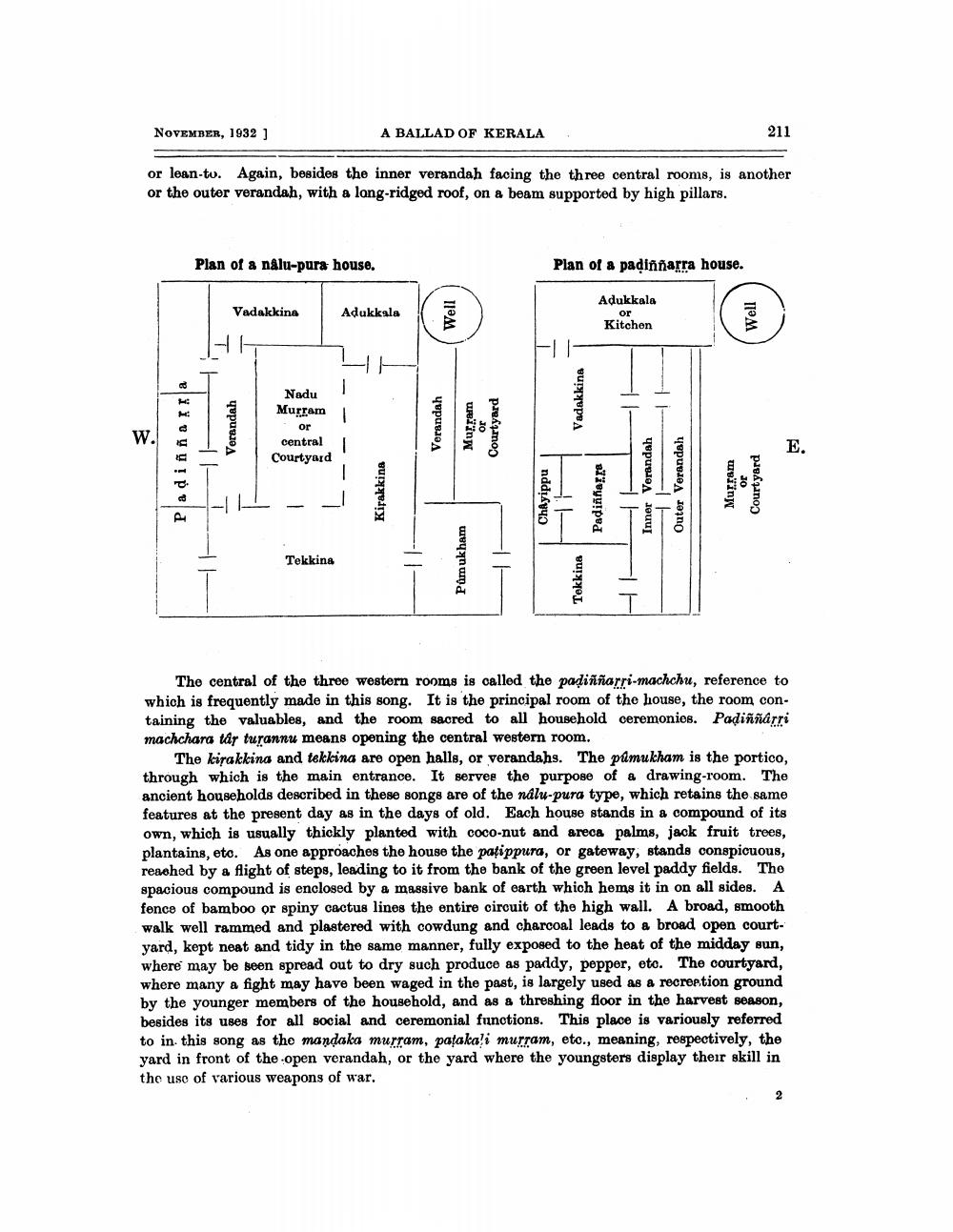________________
NOVEMBER, 1932 ]
A BALLAD OF KERALA
211
or lean-to. Again, besides the inner verandah facing the three central rooms, is another or the outer verandah, with a long-ridged roof, on a beam supported by high pillars.
Plan of a nálu-pura house.
Plan of a padiññarra house.
Vadakkina
Adukkala
Well
Adukkala
or Kitchen
Well
Nadu
Vadakkina
Verandah
Verandah
Padiññar a
Murram
or central Courtyard
Murram Courtyard
Kirakkina
Chiyiрри
Padiñharia
Inner Verandah
Outer Verandah
or Murram Courtyard
|
Tekkina
Pômukham
Tekkina
The central of the three western rooms is called the padiññarri-machchu, reference to which is frequently made in this song. It is the principal room of the house, the room containing the valuables, and the room sacred to all household ceremonies. Padiññárri machchara tår turannu means opening the central western room.
The kirakkina and tekkina are open halls, or verandahs. The pumukham is the portico, through which is the main entrance. It servee the purpose of a drawing-room. The ancient households described in these songs are of the nálu-pura type, which retains the same features at the present day as in the days of old. Each house stands in a compound of its own, which is usually thickly planted with coco-nut and areca palms, jackfruit trees, plantains, eto. As one approaches the house the patippura, or gateway, stands conspicuous, reached by a flight of steps, leading to it from the bank of the green level paddy fields. The spacious compound is enclosed by a massive bank of earth which hems it in on all sides. A fence of bamboo or spiny cactus lines the entire circuit of the high wall. A broad, smooth walk well rammed and plastered with cowdung and charcoal leads to a broad open courtyard, kept neat and tidy in the same manner, fully exposed to the heat of the midday sun, where may be been spread out to dry such produce as paddy, pepper, etc. The courtyard, where many a fight may have been waged in the past, is largely used as a recreation ground by the younger members of the household, and as a threshing floor in the harvest season, besides its uses for all social and ceremonial functions. This place is variously referred to in this song as the mandaka murram, pațakali murram, etc., meaning, respectively, the yard in front of the open verandah, or the yard where the youngsters display their skill in the use of various weapons of war.




